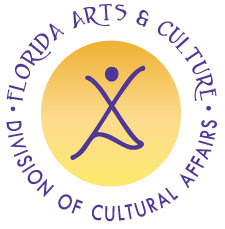Mariah Quinn (right), assistant professor of medicine and associate
program director for the
residency in internal medicine, leads her class
of medical residents in an exercise at the Chazen Museum of Art.
Art museum visits help doctors understand feelings
by Susannah Brooks
Though often perceived as omnipotent healers, doctors are merely — and importantly — human. At the UW-Madison School of Medicine and Public Health, Mariah Quinn uses art to help medical residents reflect on their professional identities, emotions and cognitive processes.
"Medical education is evolving to help physicians understand how to listen to and manage their own thoughts and feelings," says Quinn, director of humanism in medicine for the Department of Medicine. "I like to utilize art and the museum environment to provoke medical residents to approach thoughts and feelings that might be difficult to access otherwise."
Art in a hospital helps humanize a clinical environment during a time of uncertainty and fear. Some studies show how it can help patients heal faster.
In Quinn's course "Communication and Humanism in Medicine," bringing medical residents to UW-Madison's Chazen Museum of Art helps them develop skills and explore the emotional side of their work. They'll take these skills back to a patient's bedside.
"The art objects and the museum environment contribute to our ability to look at themes like vulnerability, uncertainty, caring for dying patients, and bias with more courage," says Quinn. "In this environment, they don't have to fear making mistakes; they can take risks. We discuss topics that can be very uncomfortable and provocative for many people."
Read the full article here










No comments:
Post a Comment